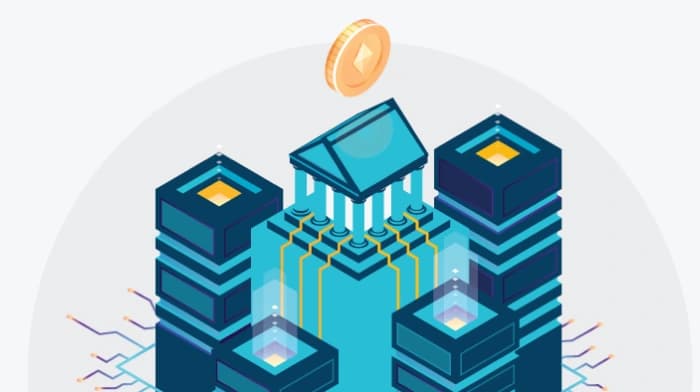
Introduction
Traditional banking institutions have faced operational challenges that affect both their operations and their customer base. Financial institutions face delays in essential services because of slow settlement processes and limited liquidity options and high operational costs.
A banking system exists which enables immediate transaction settlement and effortless asset trading and maintains tamper-proof transparent records. Real-world asset (RWA) tokenization transforms physical and financial assets including bonds and real estate and credit into digital tokens which exist on blockchain networks to create this vision.
Banks that adopt this technology can optimize their operations and speed up international transactions and enhance their asset management functions and access markets that were previously inaccessible. The technological advancement brings more than modernization because it establishes a new financial system that combines efficiency with transparency and inclusivity.
Why Asset Tokenization Matters for Banks in 2025 and Beyond
The banking industry now recognizes asset tokenization as an essential strategic requirement which transforms asset management and trading and monetization processes.
Enhanced Liquidity Opportunities
Through tokenization banks can transform illiquid assets including real estate and private equity holdings into digital tokens that become tradable assets. The asset conversion process allows investors to access new markets while speeding up capital movement in the financial system.
Improved Asset Tracking and Transparency
The use of blockchain technology in tokenization makes every asset transaction both traceable and verifiable. The improved transparency system enhances trust levels while decreasing fraud risks and simplifying asset management compliance and regulatory reporting procedures.
Fractional Ownership Capabilities
Banks provide fractional ownership opportunities for high-value assets which enables wealth management services to reach more clients without compromising investment quality or potential returns.
Enhanced Operational Efficiency
Smart contracts automate manual processes including settlement procedures and compliance checks. The automation process decreases operational costs while shortening processing duration and improving transaction precision in all banking operations.
Expanded Product Innovation
Through asset tokenization banks can develop new financial products like tokenized bonds and token-backed loans which attract modern financial consumers and tech-oriented investors.
Regulatory Preparedness
Banks that adopt tokenization technology will be ready for future regulatory frameworks because they can quickly adapt to new compliance standards.
The Asset Tokenization Lifecycle in Banking
Banking institutions undergo total changes in asset management when real-world assets are tokenized because this process transforms the way physical assets and financial assets are handled and traded while ensuring security. The blockchain-enabled financial ecosystem depends on each stage for achieving transparency and efficiency as well as regulatory compliance throughout the asset lifecycle from discovery to ongoing management.
Asset Identification and Due Diligence
The banking process begins by selecting real estate bonds and invoices as assets and performing detailed examinations of their legal status and financial stability and regulatory requirements. The main goal of this process is to verify ownership and perform accurate valuation assessments and risk evaluation to advance only trustworthy assets that meet tokenization standards.
Token Design and Framework Definition
The stage defines how assets will get their digital representation. The organization defines token structures to determine if they are fungible or non-fungible and whole or divisible and establishes compliance frameworks. Smart contract protocol development and governance rule establishment for token operations across platforms and regulatory mapping happen in this phase.
Token Generation
After establishing the frameworks the actual digital token creation process starts. Smart contracts execute token minting procedures to create digital assets which symbolize ownership and physical asset rights. Security and traceability become possible through asset metadata encoding which includes legal ownership details and valuations and usage restrictions.
Ledger Mapping and Custodianship
The process of mapping tokens to distributed ledgers (blockchains) coincides with the transfer of physical or legal asset representations to custodians or regulated entities. The procedure creates robust digital-to-real-world connections which preserve trust and accountability in the entire system.
Deployment and Interoperability
The deployment of tokens takes place on public or private blockchain systems according to specific use case requirements. Interoperability between platforms becomes vital to achieve both liquidity and scalability. The blockchain bridges together with APIs allow users to execute safe token transactions between DeFi applications and wallets and marketplaces.
Trading, Settlements, and Secondary Markets
Asset trading becomes possible through licensed exchanges and decentralized finance platforms during this phase. Blockchain confirmation provides fast settlement procedures because of its near-instant processing abilities. Tokens now operate in secondary markets which provides increased market accessibility and liquidity while increasing transparency for investors with limited capital.
Token Renewal and Lifecycle Management
Asset valuation and token maintenance and audits need to continue in order to preserve system compliance and update capabilities. Tokens need renewal or modification or burning procedures when assets reach maturity or when legal disputes occur or corporate actions take place. The asset lifecycle management process maintains asset trustworthiness from start to finish.
Banking Use Cases for Asset Tokenization
Through asset tokenization banks now manage traditional financial assets more efficiently by enabling rapid secure transactions between various banking operations.
Loan and Mortgage Tokenization
Banks transform home loans and business mortgages into digital tokens which allows fractional ownership and simpler transfers and faster liquidity while decreasing administrative work and settlement duration.
Real Estate and Infrastructure Investments
Banks enable investors to purchase fractions of high-value assets through their tokenization process of large real estate and infrastructure projects. The method enhances market accessibility while generating fresh capital opportunities.
Private Credit and SME Financing
Through private debt tokenization and small and medium enterprise loan tokenization banks can provide adaptable financing solutions and spread investment risks more efficiently. The approach draws investors who want to earn higher returns from sectors that lack traditional banking services.
Supply Chain and Invoice Financing
Banks transform invoices and receivables into tradeable assets by tokenizing them. Businesses gain faster access to working capital through this method which also enhances supply chain transparency and reduces fraud risks.
Real-World Implementation Examples
Asset tokenization is actively transforming global banking operations. Major institutions like JPMorgan, HSBC, and Societe Generale are pioneering this innovation by digitizing traditional assets using blockchain technology.
JPMorgan's Kinexys Platform
JPMorgan introduced the Kinexys platform to tokenize U.S. Treasury bonds and money market shares among other assets. The Kinexys platform allowed JPMorgan to develop JPM Coin which provides instant settlement and continuous institutional payment capabilities. The real-time infrastructure decreases counterparty risk and speeds up settlements and increases transparency which results in faster and more cost-effective and secure legacy banking systems.
HSBC's Digital Bond Innovation
HSBC released a $100 million digital bond through blockchain technology to show how tokenized assets can transform conventional securities. The project allowed for immediate settlement while reducing the need for middlemen and boosting market liquidity. The system improved bond trading accessibility which could lead to lower transaction expenses and enable smaller investors to buy fractional shares.
Societe Generale's Blockchain-Based Assets
Societe Generale employed Ethereum to create blockchain-based tokens from €100 million worth of covered bonds and structured products. The implementation verified European regulatory compliance throughout bond issuance and settlement operations. Public blockchains demonstrate how transparency and auditability together with financial institution interoperability will become standard operational practices in the future.
The following real-world examples show that asset tokenization exists beyond theory because major financial institutions have already started implementing these solutions in their operations.
The Future of Banking Through Tokenization
The implementation of banking asset tokenization creates a financial system that operates more efficiently while providing enhanced security and transparency. Banks achieve operational cost reduction through digital token conversion of physical assets which also speeds up settlement procedures and expands global investor access.
The theoretical applications demonstrate real-world implementation cases that major financial institutions have already put into practice. The growing adoption of banking industry will transform how organizations manage and distribute value through asset tokenization.
The financial product spectrum including bonds and real estate will experience a transformation through asset tokenization because it brings innovative speed and inclusive solutions to worldwide banking operations. This transformation marks a major advancement in financial infrastructure modernization which establishes better banking services for all stakeholders.
Ready to Explore Asset Tokenization Solutions?
Your banking operations can achieve transformation through the implementation of modern tokenization technology. Our experts will assist your institution in deploying secure and compliant and scalable asset tokenization solutions that meet your specific needs.
Conclusion
The introduction of asset tokenisation in the real world in the banking industry is a clear indication that the future of finance has come and is being rolled out right now. This technology is an important development not only as a digitalisation of the current instruments, but as a new dimension of interaction between the traditional bank system and new digital platforms. The potential to facilitate the instant settlement, cross-border 24/7 asset trading, and immutable, transparent record-keeping opens up new possibilities to banks and their customers in a way not seen before.
By tokenizing, banks can diversify their service provision offerings and penetrate into markets that previously were inaccessible, and improve trust by offering transparency. To investors, it gives a chance to engage in transactions where the assets are of high value and complexity by owning their parts in a fractional manner. In the case of financial institutions, it saves on cost and minimises risks of the traditional processes of managing assets.
Thus, tokenisation in banking is not only a drive to technological modernisation but a strategic need that in the future will determine the competitiveness of financial institutions. Banks which manage to adapt to this change will have a powerful first-mover advantage. This will enable them to launch a totally new type of financial products that are based on speed, transparency and inclusivity. The concept of tokenization is not new; it is one of the elements of a new world financial order which allocates value and trust in a more efficient and fair manner.


